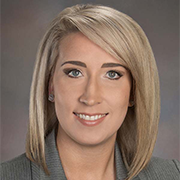Budgets are a key component in the planning and financial stability of a nonprofit organization. A budget provides answers to how resources will be used to accomplish the organization’s vision, mission, goals and objectives. It provides a plan for where funds will originate and how they will be used. A well-developed budget can help lead to the success or contribute to the failure of an organization.
The budget should be more than just an annual exercise with minimal thought or effort! The following are recommendations for creating an accurate, useful and strategic budget.
- Identify priorities. Resources are often limited in nonprofit organizations. Nonprofits are trying to invest the majority of their funds into the programs it provides. Therefore, the organization should identify the most important objectives and budget for those first. This way, if cuts or adjustments need to be made, they can be applied to the lower priority items.
- Look at trends and past activity. The best way to start creating a budget is to look at what has happened in the past and adjust the current budget for any changes that are expected in the future. Many revenues and expenses are often very consistent from year to year when the trends are analyzed.
- Give revenues just as much attention as expenses. The main focus of a budget is often expenses; however, the revenues deserve just as much attention. After all, it doesn’t matter what the budgeted expenses are if the nonprofit doesn’t have an accurate depiction of the funds needed to pay for them.
- Avoid reliance on unknown fundraisers or contributions. For some, the solution to balancing a budget is increasing contributions or adding an unknown fundraiser. Nonprofits should not assume they will be able to simply raise or solicit more funds if there is not an actual plan or event in place to do so. Don’t spend now and hope for funds later.
- Don’t be afraid to make unpopular decisions. Again, resources can be limited. It can be apparent when developing the budget that the organization simply cannot afford the amount of expenses it anticipates. Unpopular decisions to make cuts to reduce expenses is better for the financial health of the organization if those decisions are made sooner rather than later.
- Budget for administration and fundraising. While the programmatic activities of nonprofit are the main focus, these
activities need the support of the administrative and fundraising staff. Donors and grantors want to give funding to nonprofits that not only have
a great mission but are fiscally responsible with funds and manage them appropriately.
Supplemental Reading: Best Practices for Effective Donor Acknowledgement Letters.
- Monitor and analyze. A budget should not be approved once a year and then tucked away. It is a living document that should have a regular appearance in the financial analysis and reporting of the organization. Board members and management should regularly review actual results versus the budget to determine if the organization’s performance is progressing according to plan or if adjustments should be made.
- Revise the budget when necessary. A budget is not a static document. Organizations do their best to plan and create the budget, but sometimes things change. Major changes from the original budget expectations should be reflected in an amended budget. Original and amended budgets should be approved by the board of directors.
- Involve departments and celebrate success. The key to making a budget useful and getting employee buy-in is to make others a part of it. By making departments or employees responsible for their portion of the budget, accountability and overall concern for the financial success of the organization can be established. Don’t forget to celebrate actual favorable results with the employees that helped make it happen!

